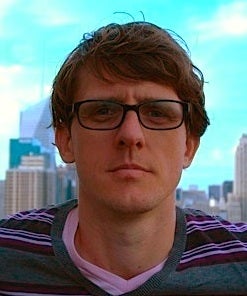
It's been labeled a dream technology. But does 3D printing do more harm than good?
Written by Michael Thomsen (@mike_thomsen)
In last week's State of the Union address, Barack Obama asked Congress to support a $1 billion plan to support research into 3D printing in hopes that it will lead to a return in US manufacturing jobs. Obama cited work at the National Additive Manufacturing Innovation Institute (NAMII), a project funded in part by $30 million from the Department of Defense, which claims to have used 3D printing to save the military more than $500 million since opening, creating titanium jet fighter parts and other industrial components at a lower price than traditional manufacturing. NAMII was opened in a closed factory space in Youngstown, Ohio where, according to Obama, "new workers are mastering the 3D printing that has the potential to revolutionize the way we make almost everything. There's no reason this can't happen in other towns."
To wit, Obama has proposed opening 15 new centers based on the NAMII model, designed to connect businesses with universities and community colleges and allow them to cross-pollinate under the protective awning of government funding. The plan was framed as a way of replacing what's gone missing in American society, in this case an effort to replace the decades-long loss of American manufacturing jobs. 3D printing, or "additive manufacturing," is a technology that will reverse that, an important part in continuing the momentum of bringing 500,000 US manufacturing jobs home again over the last three years.
3D printing is not an innovation, but a response to the dwindling of individual worth of objects and the work needed to create them.
3D printing is sometimes thought of as a dream technology allowing listless suburbanites to print their own iPads, blue jeans, and jewelry. Companies like MakerBot have invested in the promise of selling home kits that would become as ubiquitous as the computer printer--though so far their products are limited to simple toylike objects of varying size and dimension. Other companies, like Tinkercad, have made the process of making 3D blueprints a kind of game, simplifying the sometimes overwhelming interface of CAD software into a colorful, drag and drop experience with some light game activities where users can try and guess the steps used in making other people's designs. Still others have tried to replicate weapons, such as Defense Distributed, a Texas-based company that wants to create a Wiki of 3D printing designs for all manner of firearms.
In each case, the hopes of the technology are pinned not to the creation of something new, but something old, things that already exist but have become prohibitively expensive or troublesome to acquire. And while the technology can produce simple models without many layers or complicating components, it is an open question as to whether the complex array of interrelating materials will ever become manageable enough to make the 3D printer a real miracle device and not just a slightly less intensive way to produce metal and plastic parts. The process is also relatively time consuming, with one application, the manufacture of dental implants, producing 400 units over an 18 hour period.
The technology is a strange but ideal accompaniment of our times, when the creative energy and resources to pursue new ideas and experiences has been subsumed by the consumerist desire for access to what already exists in more privileged demographics, with the biggest possible profit margin. The irony is that pursuit of this technology becomes obsessed with removing the cost of human labor required to make things, taking the unproductive factors of employee care and compensation into consideration when one thinks about jeans, jewelry, or iPads. The prospect of owning things has outpaced the consideration of other's time and energy spent creating those things, and the market has finally provided a way for consumers to manage all of the labor of creating the good on their own, limited only by the looming knot of legal combat over blueprint ownership and licensing.
The end products are, likewise, simulacra. A 3D printed diamond is not a diamond, but an artificial replication--a computer-authored and executed model of a naturally occurring and culturally desirable thing that we have lost hope of ever having through the labor and scarcity that originally lead to it having a value identity. In that way, 3D printing is not an innovation, but a response to the dwindling of individual worth of objects and the work needed to create them. We don't want things enough to support the time, labor, and community structures necessary to create them, but we still kind of want them. We have invented machinery to split the difference, giving us versions of what once was, to do with as we please. Meanwhile, creation is driven a step further into abstraction, occurring in software, carried out by self-directed machinery who'll need us to pick a size, color, and click "OK" in the print dialog, an effort so minimal and diffuse that it's worth almost nothing at all.

